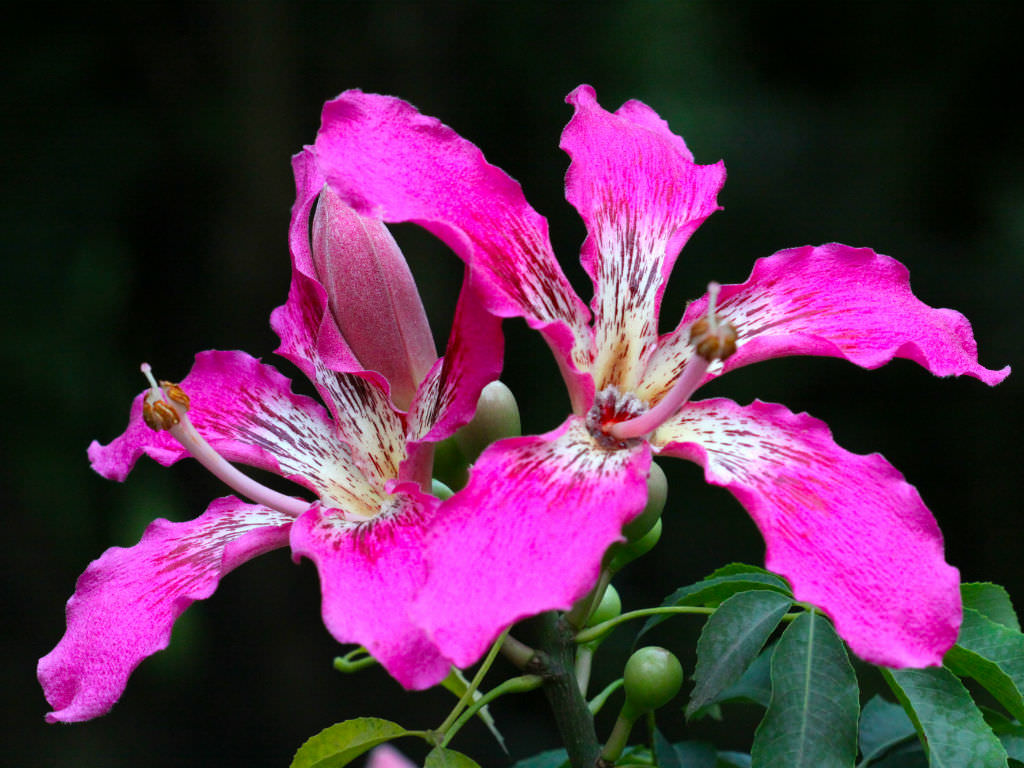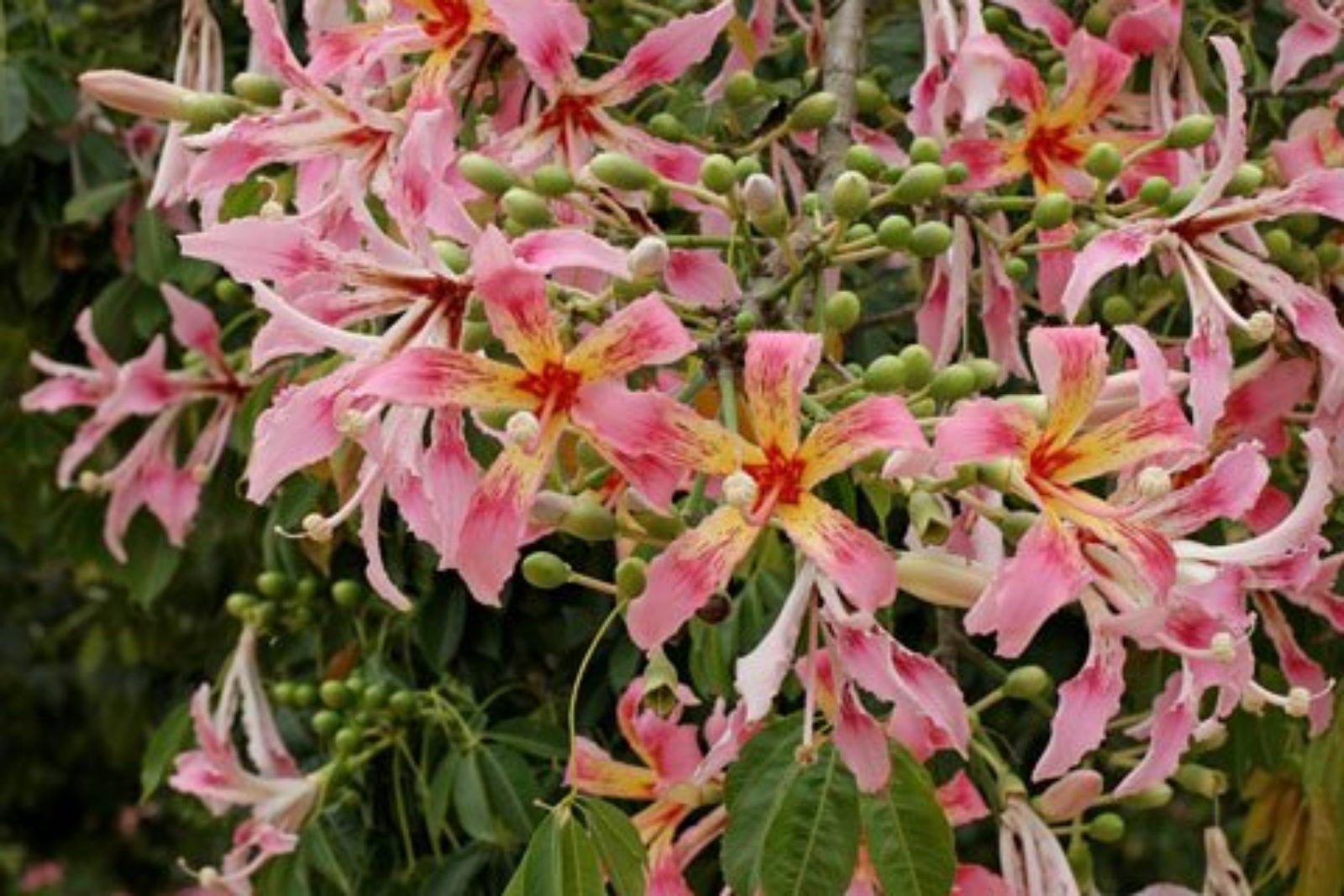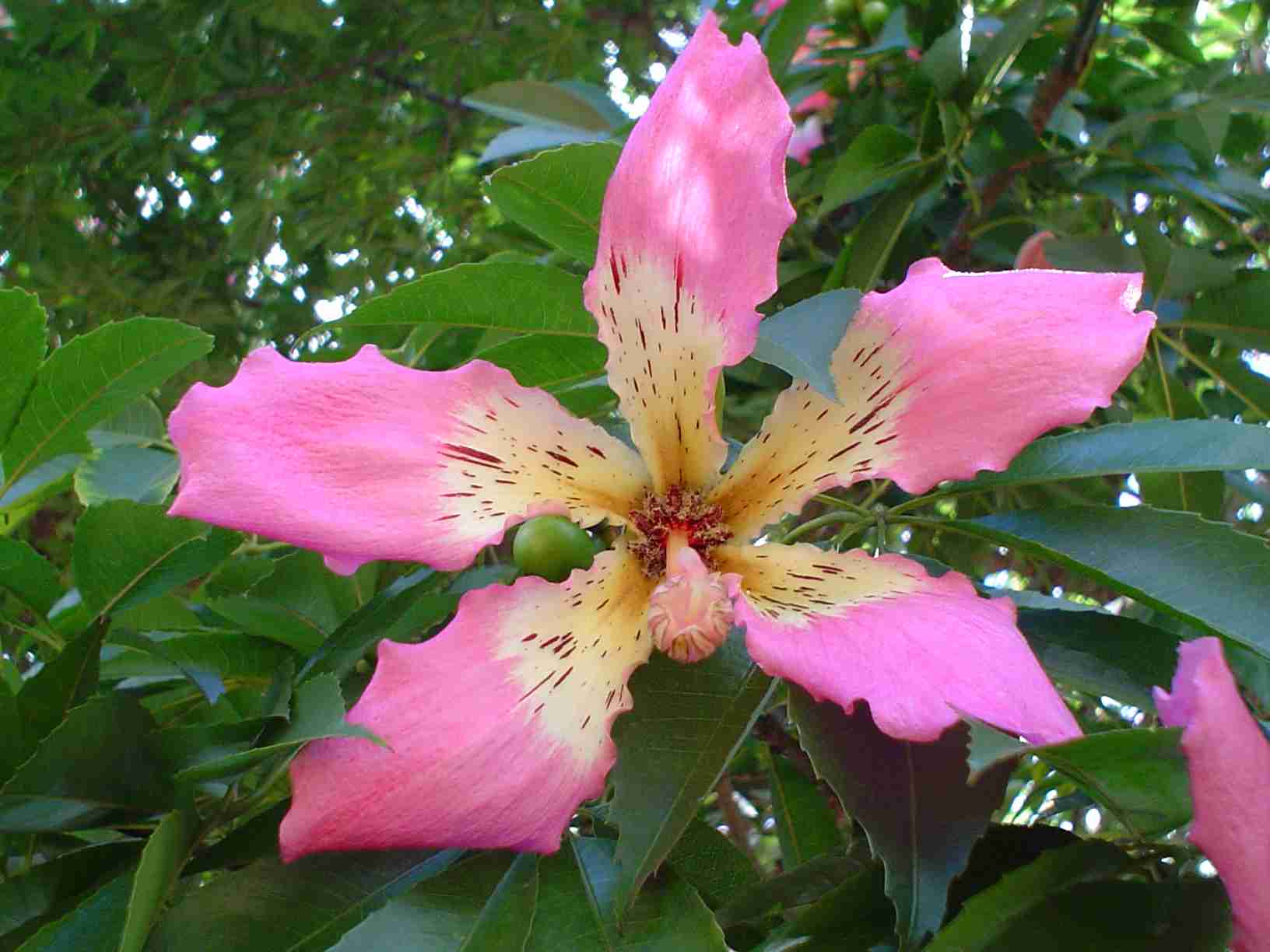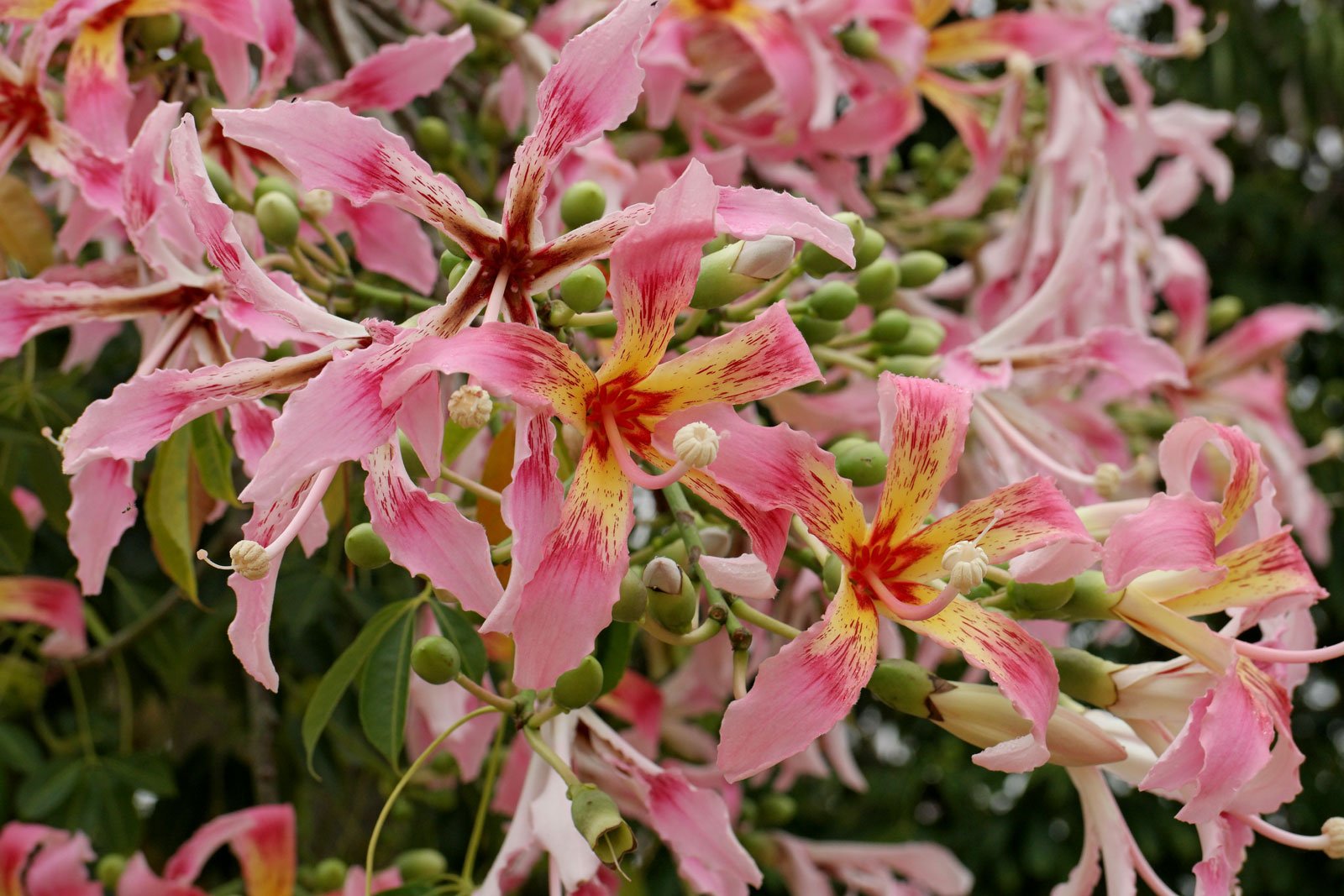
Ceiba speciosa (Silk Floss Tree) World of Succulents
Ceiba speciosa. DIVISION: Tracheophyta (vascular plants) CLASS: Magnoliopsida (dicotyledons) ORDER: Malvales FAMILY: Malvaceae; GENUS: Ceiba (formerly Chorisia) SPECIES: speciosa; OVERVIEW. The exquisite blooms, odd pods, and cottony puffs of the prickly-trunked, floss silk tree are hard to ignore. This tree is a standout!

Ceiba speciosa
The Silk Floss Tree ( Ceiba speciosa ), also known as the kapok tree, is a captivating and distinctive species that hails from South America. Renowned for its ornamental and imposing presence, this deciduous tree can reach heights of up to 80 feet, with a trunk adorned with imposing conical thorns. During the dry season, the Silk Floss Tree.
Ceiba speciosa (Silk Floss Tree)
Ceiba speciosa Common name: Floss Silk Tree Palo Borracho (drunken stick or tree) Pronunciation: SAY-buh spee-see-OH-suh Family: Malvaceae (includes Bombacaceae) Genus: Ceiba Synonyms: Chorisia speciosa Type: Broadleaf Native to (or naturalized in) Oregon: No Broadleaf, semi-deciduous, large tree, to 60 ft high and 30 ft wide (18 × 9 m).

Ceiba speciosa (Silk Floss Tree) World of Succulents
Ceiba speciosa leaf. John Rawlings. Faintly serrated light-green leaflets grouped in fives or sevens are overpowered during the flowering season. The upper trunk and branches are green, but the most distinctive feature is the wicked-looking array of stout spines that crowd the trunk; near the base they protrude by an inch or more..

Fine Beautiful Ceiba Speciosa Flower Ssf Artificial Plant
Floss silk from Ceiba can provide a sustainable fiber alternative that comes from a renewable rainforest resource. An alternative to down, floss silk is breathable and hypoallergenic.. a practice becoming less common. Ceiba speciosa is a great example of a plant with many uses beyond its spectacular beauty in the landscape! Learning more.

Ceiba speciosa (Chorisia speciosa) Floss Silk Tree Flowering trees
This grand ornamental deciduous tree, native to Argentina and Brazil, is a showy specimen with some unusual traits that make it hard to mistake it for any other tree. With its bulging prickly trunk, exotic flowers, tall size, silky floss, and pear-sized seeds pod, the tree is unique.
Ceiba speciosa fotos de su floración (Salta. Argentina)
Ceiba speciosa (A. de Saint-Hilaire) P. Ravenna (Chorisia speciosa) Floss Silktree Other Common Names: Corisia, Kapok, Paineira-Rosa, Silk-Floss Tree. Family: Some authorities place the Ceiba P. Miller in the family Bombacaceae, while others consider this a subfamily, Bombacoideae, within the Malvaceae.
Ceiba speciosa (Silk Floss Tree)
Flowers of pink floss-silk tree ( Ceiba speciosa) Pink Floss-Silk Tree Of the two species in cultivation, the showiest and most commonly grown is pink floss-silk tree, ( Ceiba speciosa, formerly Chorisia speciosa ). This striking tree is an attention-getter at all seasons because of its thick, heavy trunk, studded with large gray thorns.

CHORISIA SPECIOSA (SYN. CEIBA SPECIOSA) Shade trees, Tree, Landscape
Classification. Common Name: Silk Floss Tree Scientific Name: Ceiba speciosa Family: Malvaceae Distinguishing characteristics Habitat: These trees can reach a potential 25 meters tall with fat and thorny bottle-shaped trunks and branches. These trees can be commonly found in the tropical/subtropical areas of South America, but also now can be found in other parts of the world as a decorative.
Le ciel est par dessus le toit La Ceiba Speciosa
Description: Ceiba speciosaSN|33376]]SN|33250]] is a species of deciduous tree with an immensely swollen, bottle-shaped trunk, 2 m in diameter at widest part and with a spreading, rounded head.

Ceiba speciosa
The Ceiba, or ya'axché (in the Mopan Mayan language), symbolised to the Maya civilization an axis mundi which connects the planes of the Underworld ( Xibalba) and the sky with that of the terrestrial realm. This concept of a central world tree is often depicted as a Ceiba trunk.

Flora of Zimbabwe Cultivated species information individual images
So #95 of "365 Days of Plants" is an atypical houseplant, but sometimes I like to try unusual species in the home! I tend to like digitate and palmate leaves.

Fine Beautiful Ceiba Speciosa Flower Ssf Artificial Plant
Storm victim.Floss Silk Tree (Ceiba speciosa) by HamiltonSquare: Dec 13, 2014 12:10 AM: 7: These blooms appear to be Ceiba speciosa by plantladylin: Dec 1, 2021 11:35 AM: 2: Adding Actions: » Upload a photo » Post a comment » Add an event report « Add a new plant to the database « The Plants Database Front Page. Garden.org Homepage.

Ceiba speciosa
Ceiba speciosa, formerly known as Chorisia speciosa, is a large, semi-deciduous tree with several unique and attractive characteristics. It can grow up to 60 feet (18 m) tall and up to 30 feet (10 m) wide, but the large studded conical prickles on the greenish trunk and branches are most noticeable.

Paineira (Ceiba speciosa) Ceiba speciosa (A.St.Hil.) Rave… Flickr
The silk floss tree (Ceiba speciosa, formerly Chorisia speciosa), is a species of deciduous tree native to the tropical and subtropical forests of South America. It has a host of local common names, such as palo borracho (in Spanish literally 'drunken stick'), samu'ũ (in Guarani) or paineira (in Brazilian Portuguese). In Bolivia it is called Toborochi, means 'tree of refuge' or 'sheltering tree'.

Ceiba speciosa (A.St.Hil., A.Juss. & Cambess.) Ravenna Plants of the
Ceiba Speciosa 'Silk Floss Tree' succulents need strong light. When planting this succulent type in a garden, make sure it gets sunlight. Full to partial sun is the best for its growth. It is better to grow outdoor rather than indoor. This type of succulent prefers a warm climate. It can survive at zone 9b-11b which is around -3.9°C (20°F.